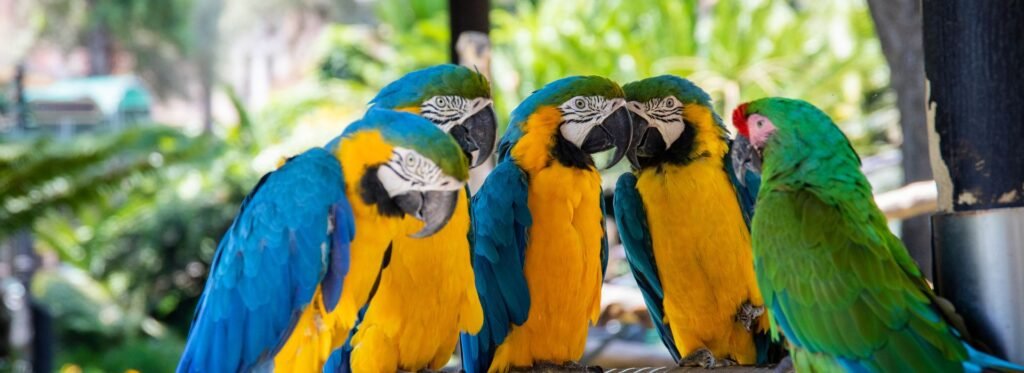
- Leave a review
- Bookmark
- Share
- Report
- prev
- next
Description
January is an exciting time to kick off the year with a meaningful cause: Adopt a Rescued Bird Month. This month-long initiative raises awareness about the importance of rescuing and adopting birds that are in need of loving homes. Whether you're a bird enthusiast or someone considering a new pet, this is the perfect opportunity to learn, engage, and make a difference.
History
Keeping birds as pets is a tradition that dates back to ancient times, with roots in Greek and Roman cultures. Commonly kept birds included ravens, parrots, pigeons, swans, doves, and magpies. These bird companions were cherished for their charm, companionship, and melodic songs, and their loss was deeply mourned.
After the classical period, the practice of keeping birds as pets persisted across Europe and eventually spread to the Americas. By the early 20th century, birds were among the most popular pets in the United States, enjoyed by people of all social classes in either cages or aviaries. Their popularity stemmed from their beauty, songs, and symbolism of fidelity.
However, the widespread capture and exploitation of wild birds, particularly for the millinery industry, led to significant declines in bird populations. By World War I, many species were on the brink of extinction. Laws were enacted to protect native songbirds, making it illegal to capture or kill migratory birds. Unfortunately, these protections did not extend to tropical species, allowing parrots and other non-native birds to be kept as pets. A 2011 survey revealed that there are over 16 million pet birds in the United States.
While native songbirds are no longer kept as pets, they retain an "honorary pet" status, being beloved for their beauty and songs. When adopting a bird, it is crucial to work with reputable organizations to avoid contributing to wildlife trafficking. Adopt a Rescued Bird Month serves to highlight these issues and promote ethical bird adoption.
How To Celebrate
- Adopt a Bird: Visit a local animal shelter or bird rescue to provide a loving home for a rescued bird.
- Volunteer Your Time: Dedicate your efforts to bird rescue centers by assisting with cleaning, feeding, and caring for the birds.
- Make a Donation: Contribute funds, supplies, or food to support shelters and organizations that care for birds in need.
- Educate Yourself and Others: Research proper bird care practices and share your knowledge with friends and family to inspire responsible pet ownership.
- Host an Event: Plan a community fundraiser, webinar, or educational workshop focused on bird rescue and adoption.
- Gift Supplies: Send toys, cages, and food to bird rescue facilities to enhance their care capabilities.
- Support Ethical Pet Trade Practices: Advocate for the adoption of rescued birds over purchasing from breeders, helping to reduce demand for captured wild birds.
Amazing Facts
1. Varied Reasons for Rescue
Birds may be rescued due to injuries, habitat loss, or abandonment. Common injuries include broken wings, collisions with windows, or being caught by predators. Some birds are rescued from illegal pet trades or unsuitable living conditions.
2. Rehabilitation Is Critical
Wildlife rehabilitation centers focus on medical care, physical therapy, and behavioral training to prepare birds for release. Success in rehabilitation depends on minimizing human interaction to ensure the bird retains its wild instincts.
3. Special Diets and Care
Rescued birds often require species-specific diets to regain health. Many birds, such as parrots, have complex nutritional needs that must be met to prevent long-term health issues.
4. Imprinting Can Be a Challenge
If a young bird is raised by humans without proper precautions, it may "imprint" on humans, making release into the wild difficult. Imprinting can result in birds becoming too reliant on humans or unable to recognize their own species.
5. Flight Training and Conditioning
Rescued birds often undergo flight training to rebuild muscle strength and coordination before being released. This is especially important for migratory birds.
Why We Love
- Creating Awareness: It sheds light on the plight of birds in need of homes and reduces the stigma around adoption.
- Building Bonds: Birds are intelligent, affectionate companions that bring joy and fulfillment to their owners.
- A Worthy Cause: Supporting bird rescue organizations helps improve the welfare of these beautiful creatures.
- Educational Opportunity: The month encourages learning about bird species and the responsibilities of pet ownership.
- Saving Lives: Adopting a bird offers a second chance to creatures that have been neglected or abandoned.
Faq's
Absolutely! With patience and care, most birds form strong and rewarding bonds with their adoptive families.
Essentials include a spacious cage, food, water dishes, toys, and species-specific food.
Not necessarily. While some rescued birds may have behavioral or health issues, most thrive in stable and loving environments.
Check with local animal shelters, bird rescues, or avian veterinarians for adoption opportunities.

Add a review